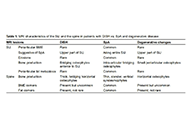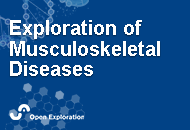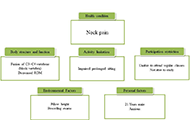3 results in Exploration of Musculoskeletal Diseases
Latest
Sort by :
- Latest
- Most Viewed
- Most Downloaded
- Most Cited
Open Access
Review
Is there a place for magnetic resonance imaging in diffuse idiopathic skeletal hyperostosis?
Iris Eshed
Published: April 27, 2023 Explor Musculoskeletal Dis. 2023;1:43–53
This article belongs to the special issue Diffuse Idiopathic Skeletal Hyperostosis- A common but neglected disease

Open Access
Editorial
Quality of care, referral, and early diagnosis of axial spondyloarthritis
Jürgen Braun ... Xenofon Baraliakos
Published: April 12, 2023 Explor Musculoskeletal Dis. 2023;1:37–42

Open Access
Case Report
Physiotherapy management of a patient with neck pain having block vertebra: a case report
Sarah Quais, Ammar Suhail
Published: March 27, 2023 Explor Musculoskeletal Dis. 2023;1:31–36

Journal Information